What’s Your Chasen Made Of? Comparing Bamboo, Silicone, and Paper Whisks for Matcha
Matcha Nōto (抹茶ノート) is Ooika's monthly newsletter. Join here free to learn more behind-the-scenes about fresh-ground Matcha.
All the Chasen
Ooika tested different types of Chasen (Japanese tea whisks) from the perspective of a long-time tea practitioner. While the delicate bamboo whisk has become nearly synonymous with matcha, modern alternatives like silicone—and even paper—are introducing new possibilities.
But are these materials actually better than traditional bamboo? And does the material really matter?
The answer is: absolutely. Whether you’re after micro foam or a clean, efficient stir, the material of your whisk directly affects the usability, texture, and overall experience of your matcha.
In this article, we put bamboo, silicone, and paper chasen to the test to see what each one brings to the bowl—and to the hand of the person preparing it.
Bamboo: Rooted in Ritual, Rich in Results
Bamboo chasen aren’t just tools—they’re tradition. For over 500 years, artisans in Takayama, Nara Prefecture have been handcrafting these whisks from different types of bamboo:
Madake (真竹),a white bamboo.
Kurotake (黒竹), a naturally black bamboo.
And the beautifully aged Susudake (煤竹), a smoked bamboo taken from old homes.
Each bamboo type carries its own charm. If you’ve ever whisked matcha with a chasen made this way, you’ll know—it’s a whole experience.
Performance
Once soaked, bamboo becomes soft and springy. It responds to the wrist intuitively, letting you create smooth, even foam naturally.
The higher the prong count (like 100 or 120), the finer the bubbles. More or less foam does is not a require to make a great tasting bowl of Matcha, these are just different styles of drinking, such as ordering a cappuccino or a latte.
Flavor and Feel
Because bamboo is natural, it can add a whisper of aroma to your tea. Lighter varieties like Madake(真竹 - the white bamboo) are fairly neutral, but darker types like kurotake may leave behind earthy or grassy notes.
Similar to the tea ceremony setting, the use of the chakama (iron kettle) can impart some of its iron to the matcha cup recipe. This might be subtle, but it’s enough to make each sip feel like history in a cup.
Best For
Daily matcha
Traditional tea ceremony settings
Anyone who wants that perfect balance of function and tradition
Lifespan
With regular use, a bamboo chasen typically lasts 3 to 6 months, but with occasional use and proper care, it can stay in great shape for up to a year or even two.
Silicone: A Modern Take to whisking
Silicone chasen, often crafted with laser printing or 3D printing, may not win points for tradition, but they definitely stand out in terms of practicality.
Durable, washable, and long-lasting, these whisks have found their place in the kitchens of baristas, busy cafés, and matcha enthusiasts who value convenience.
Performance
Less flexible than bamboo, silicone whisks can feel stiff in the hand and slide through the bowl in circles. This makes it a bit harder to control where you want to whisk more or less, or to specifically create the “W” shape whisking.
However, they produce a good foam with slightly bigger bubbles. A great option for baristas and the world of lattes.
Flavor and Feel
There’s no aroma or flavor interference. Great for those who want to taste the fullness of tea. As the tines are much thicker than a Japanese bamboo chasen there is noticeable “drag” through the liquid. This means less frothing action.
Best For:
If the bamboo chasen is an ink brush, the silicone whisk is a marker: efficient, clear, and less poetic, but still effective.
Café and commercial use
Beginners looking for consistency
High-usage environments
Lifespan
The lifespan of a silicone chasen varies depending on usage and care, but with proper maintenance, it can last for several years without losing its functionality.
Paper: Light, Travel-Ready, and Playful
Yes, there are paper chasen! Released in December 2024 by Chachasuke in Aichi Prefecture, the paper chasen was created by Koji Imagawa to make matcha more accessible.
Made from waterproof Elipla Paper, it’s easy to assemble by folding two sheets and can be reused up to five times when dried properly. The product was developed after thorough research on bamboo chasen and numerous prototypes.
Performance
Performance varies. When wet, the paper softens slightly, but the structure remains relatively stiff. Its shape makes it difficult to reach all the matcha at the bottom of the bowl, resulting in foam that doesn’t fully come together.
The foam tends to be inconsistent and unpredictable, sometimes forming large bubbles that prevent proper mixing. Depending on the type of tea bowl used, it may not perform effectively, as it might not reach all corners well.
Flavor and Feel
No additional aroma or taste. Just the tea itself. However, the sensation of whisking feels more like stirring than the delicate dance you get with traditional tools.
Best For:
While charming, paper chasen are one-time use, and sustainability is a concern. They’re best used intentionally, not habitually.
Travel or on-the-go matcha prep
Educational workshops or tea with kids
Creative play (they double as origami toys!)
What’s the Right Chasen?
Your ideal chasen depends on how you engage with matcha. Are you preparing a bowl in the tea room, or quickly rushing a cup between meetings? Do you need a tool that adapts to your hand, or one that simply gets the job done?
There’s no one “correct” answer. Just find your most suitable chasen for the right moment and person.
Bonus: Chasen Maintenance Tips
If you’re using a traditional bamboo chasen, caring for it properly will make all the difference. Here’s how:
Before use, soak it in warm water until you feel the prongs are soften.After whisking, rinse with hot water only. Never use soap. To maintain its shape, while still wet, dry it a little but with a clean cloth, and place it on a chasen stand (茶筅直し(ちゃせんなおし.)
Avoid storing it upright by the handle.
Keep it away from direct sunlight to prevent damage and excess moisture to avoid mold.
Bamboo chasen are not just tools; they embody centuries of craftsmanship and, with proper care, can last longer. Prioritize quality over quantity, as your chasen is crucial in creating the perfect matcha. The more care you give it, the better your matcha will be.
Whether traditional or innovative, the chasen is more than just a utensil, it's a partner. Choosing the right chasen means choosing the right dialogue between hand and tea, time and intention.
Which one will you use for your next bowl?
AI Statement No AI was used in the creation of this content. All Ooika articles, content, emails and more are written and reviewed by real people.

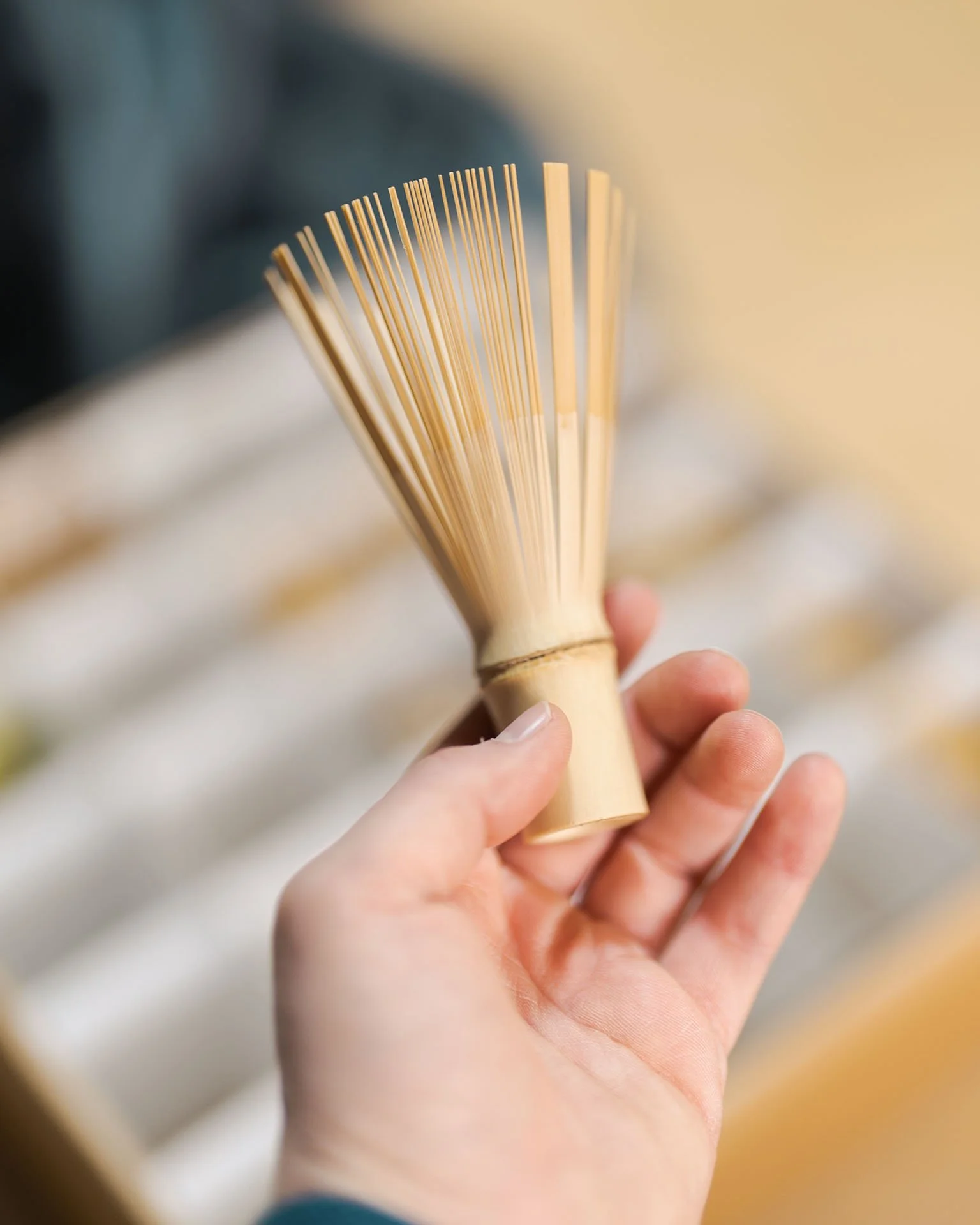
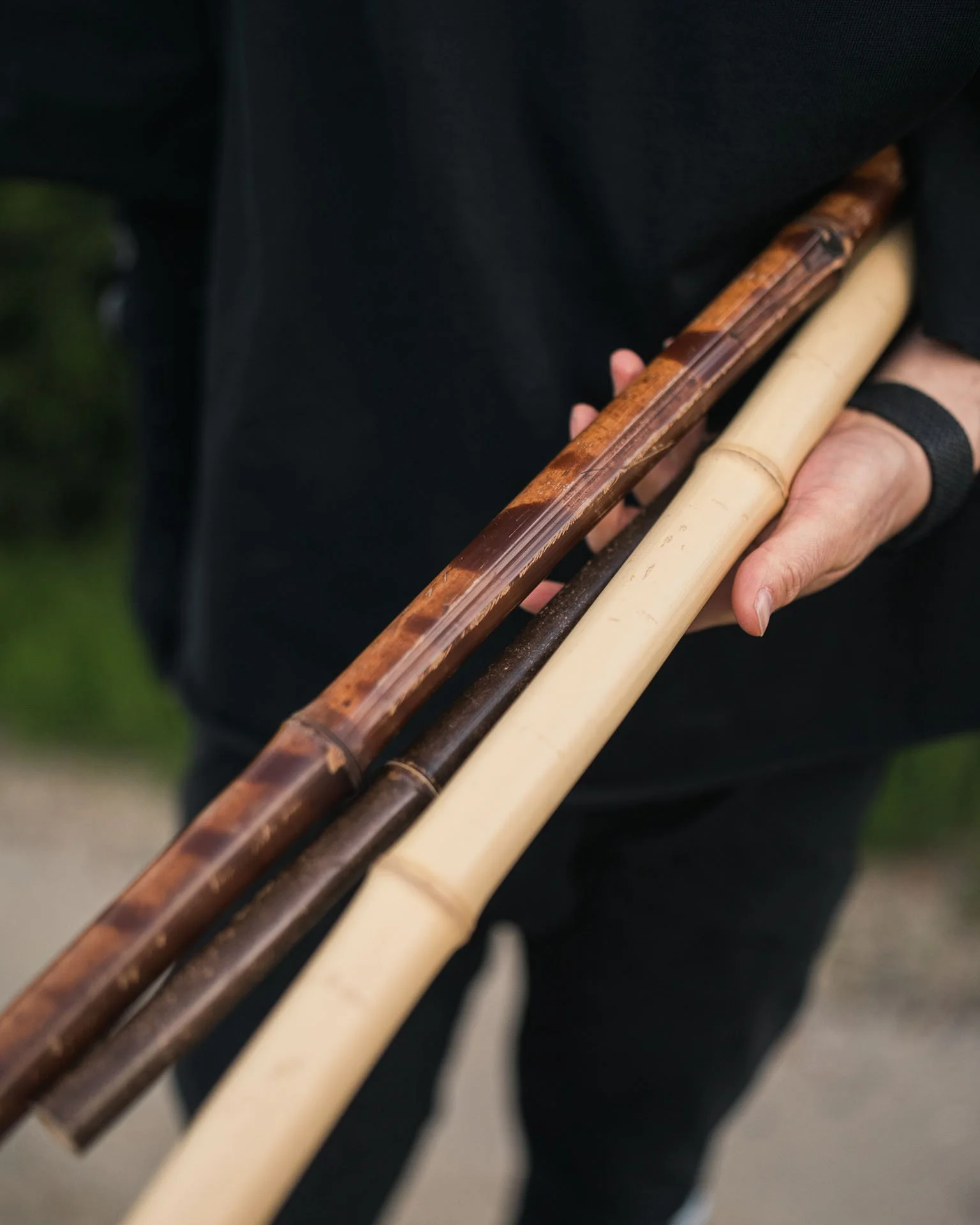
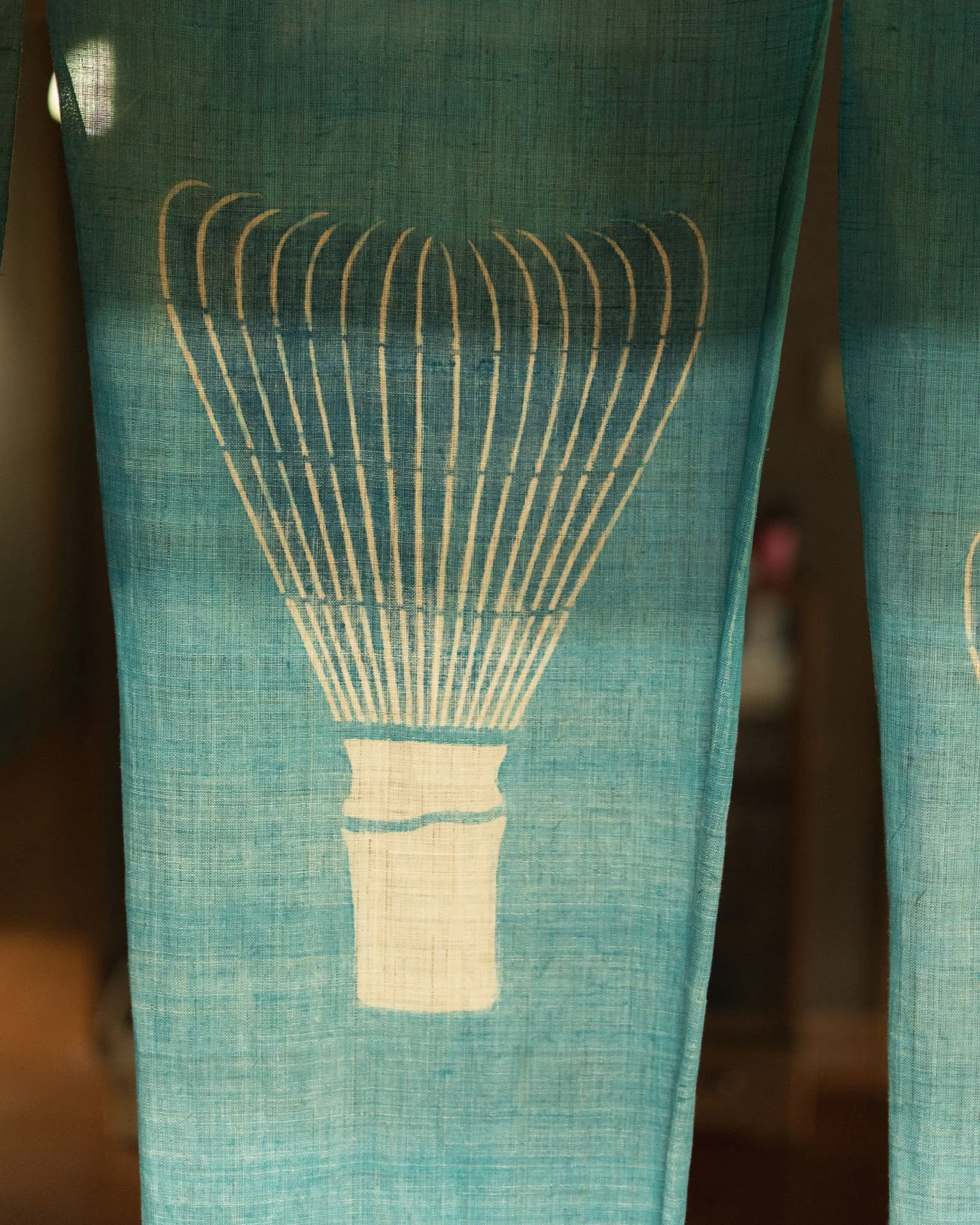
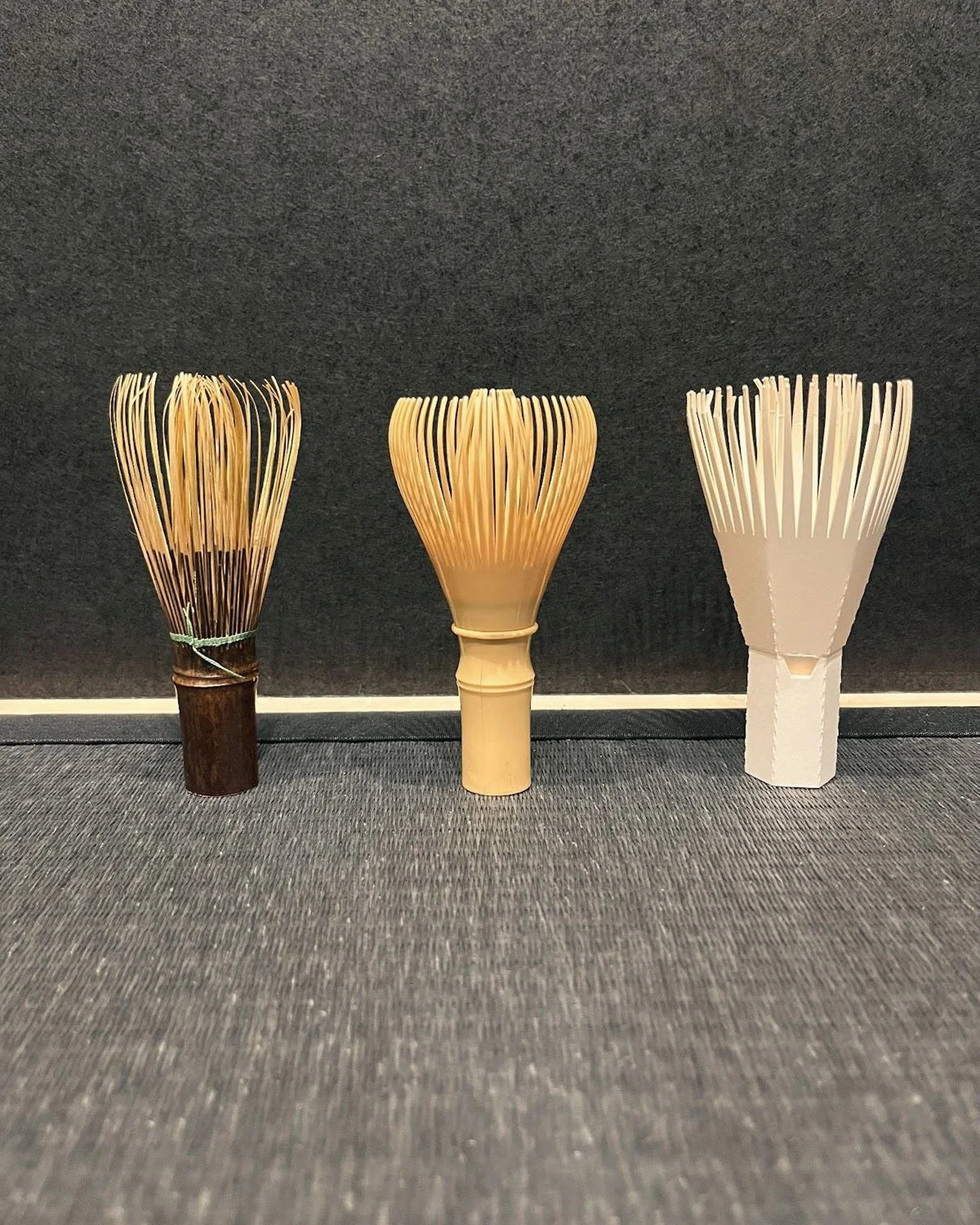
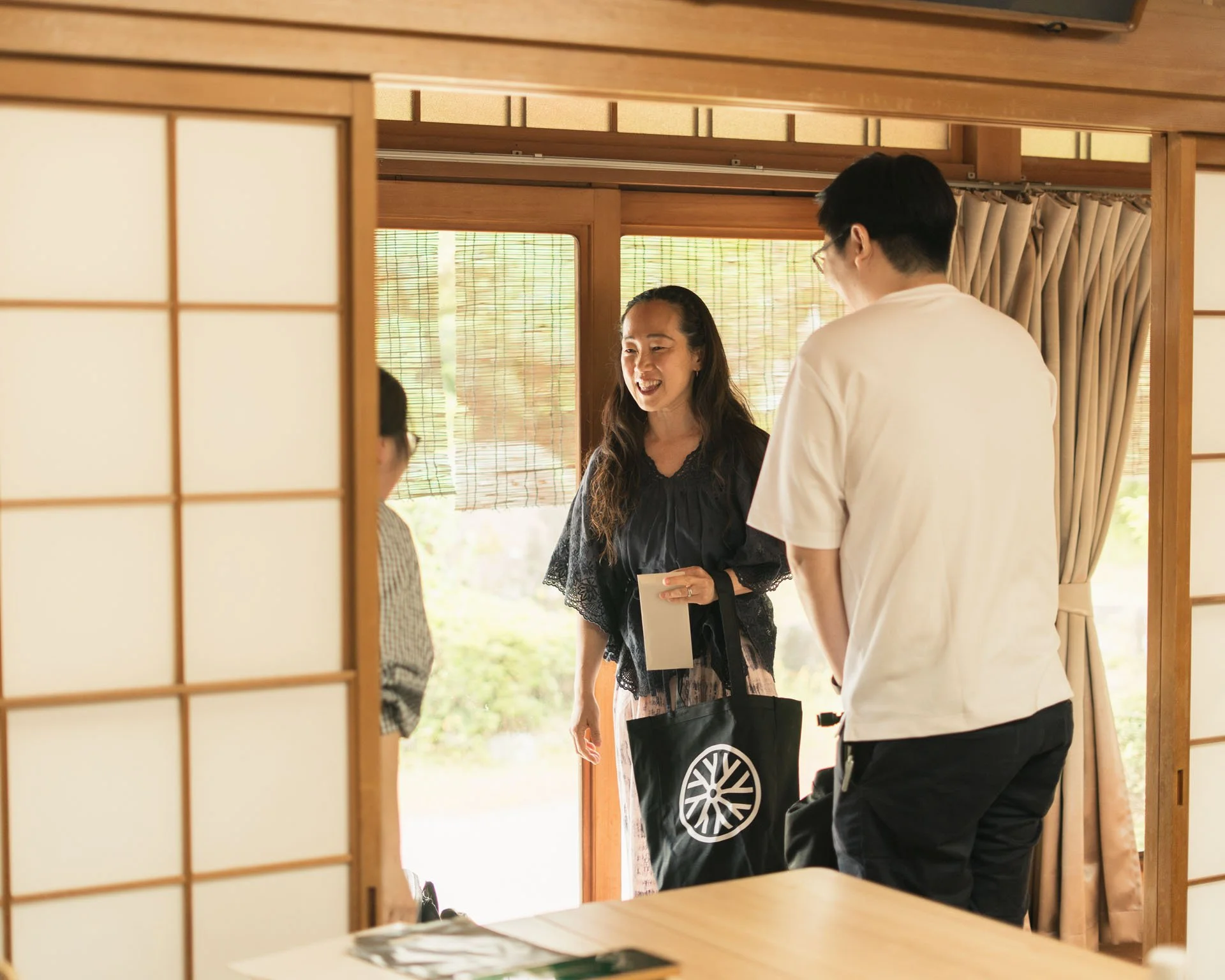
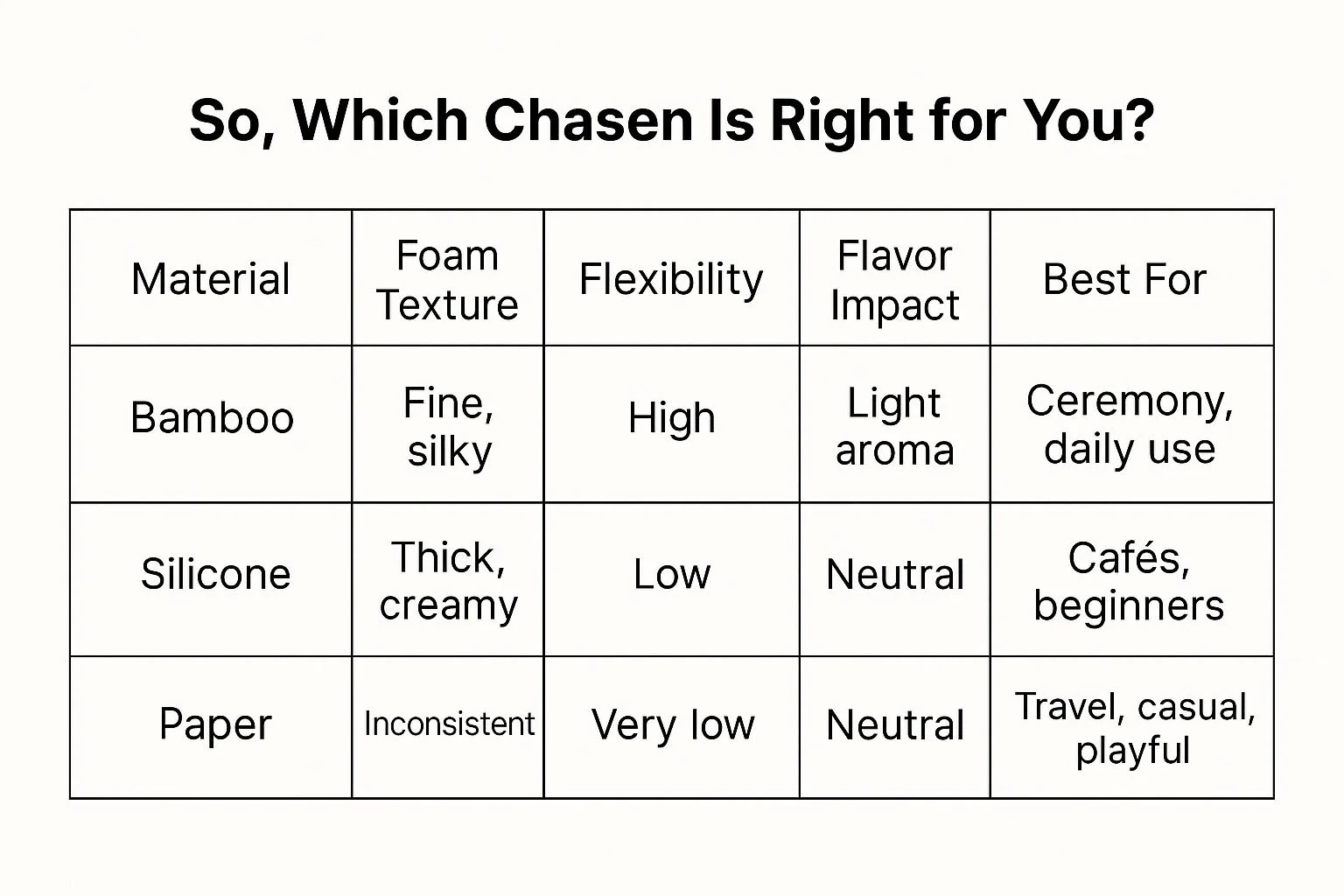
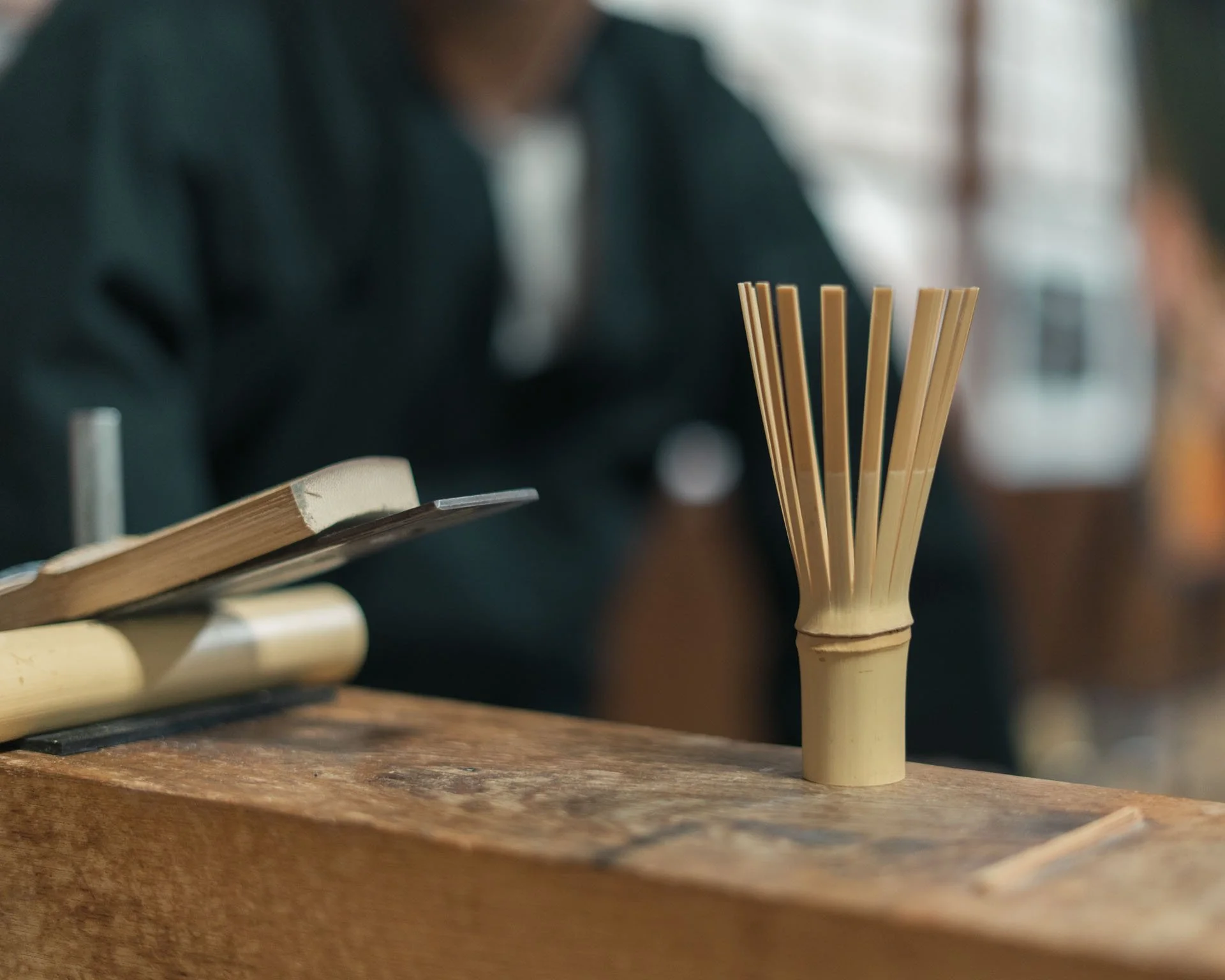


Learn what’s happening in the world of Japanese Matcha with Ooika’s Matcha Industry Report from October 2025.